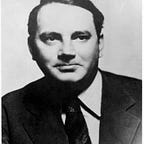President’s Day in March
“Thus did he see first, he the hill-bound, the sky-girt, of whom the mountains were his master, the fabulous South.” — Look Homeward, Angel
For twelve-year-old Thomas Wolfe, President’s Day came in early March of 1913. He wrote at school, “I have in my life seen two Presidents within the lapse of an hour.” Biographer Elizabeth Nowell describes Thomas Wolfe’s many travels with his mother between 1907 and 1913. They had been to New Orleans, St. Augustine, Daytona, Palm Beach and St. Petersburg, Knoxville, Hot Springs, and finally to Washington, DC. Over the objections of his teacher, because he was doing poorly in Algebra, and his father, who was a staunch Republican, Thomas Wolfe’s mother took him out of school for a few days to attend the inauguration of Woodrow Wilson. She wanted to show her support for a good southern Democrat. Young Thomas was excited with the prospect of seeing the “home of the United States.” The Asheville Citizen lists numerous people leaving by train to attend the inauguration, including Julia and Thomas on the afternoon of Sunday, March 2nd.
They arrived on Monday, March 3rd, and the following day, during a cold and cloudy Tuesday, watched part of the inaugural procession. The Wolfes certainly witnessed a preliminary event about 11 am when Taft and Wilson were driven from the White House to the Capitol, accompanied by the retiring Cabinet members and military escorts. In a school composition book, young Thomas Wolfe described “…I saw President Taft riding on the way to the capitol with the President to be, Woodrow Wilson. Taft rode on the right hand side of the carriage. An hour later, coming back, I saw President Wilson and Ex-President Taft but this time the Ex-President rode on the left hand side…the President rode on the right.” In a letter to his mother in 1933, thinking about the upcoming inauguration of Franklin Roosevelt, Thomas Wolfe reflected, after the passing of twenty years, he said “I could take you to almost the exact spot where we stood…and saw Woodrow Wilson ride past…with President Taft…. I was standing in front of you at the very edge of the curb wedged against the rope . . . ” Thomas remembered a “bad-tempered Yankee and his wife” behind him complaining that he was the “most fidgety and restless little boy” they had ever seen in their life. Julia remembered, “We were on B Street and Wilson and Taft were riding up in the car . . . and halted right in front of us . . . They would bow and smile, bow and smile.” They especially enjoyed seeing outgoing President Taft. Julia said he had “a beautiful complexion,” a rosy face “as pink as a baby’s.” The entire inaugural program took over five hours.
Thomas and his mother visited the Capitol, the Library of Congress, and the Bureau of Engraving. In his autobiographical outline, he recalled a freezing ride and an hours-long wait to tour Mount Vernon. In The Wax Cylinders: Julia Wolfe Interviews by John Skally Terry, published by the Thomas Wolfe Society in 2008, she tells the story of Thomas Wolfe as a witness to a part of the history of the suffrage movement. The day before the inauguration on March 3, 1913, five thousand women had gathered in Washington to participate in a parade spearheaded by Alice Paul and the National American Woman Suffrage Association. The event included over 20 parade floats, nine bands, and four mounted brigades. The parade was organized to maximize attention by strategically hosting it just one day before the inauguration. Thousands of spectators, like Julia and young Thomas Wolfe, were in town for the inauguration. Women had been fighting for suffrage for over 60 years, but this would be recognized as their first major national event. Julia Wolfe told John Terry in an early 1940s interview:
. . . we arrived in Washington the day before the . . . inauguration. And stopped on “B” Street and out in front on Capitol Hill . . . the . . . suffragettes were forming to make their parade that afternoon. And they had a stack of banners. I said to Tom, I said, ‘Tom run across there and get me one of those banners. I think I’ll march with ’em. I believe they’re right!’
And Tom said, ‘Oh Mama, Mama don’t. You’ll disgrace us. Don’t.’ And he jumped up and cried and thought I’d really meant it.
I says, ‘Oh, they’re right. That’s alright . . . you can march on the sidewalk while I go down through the middle with all those ladies.’
But ‘Oh!’ he says. ‘Oh Mama, don’t do it. You’ll disgrace us.’
. . . I didn’t march but we did . . . march or go down the sidewalk.
As the women marched up Pennsylvania Avenue from the U.S. Capitol toward the Treasury Building, they were met by disruptive spectators. It took them over one hour to move ten blocks. Not all spectators were kind. Some marchers were jostled, tripped, and violently attacked. Later reports described it as a riot or mob scene. Local police did little to prevent the violence. By the end of the day, over 100 women had to be hospitalized for injuries. Thomas Wolfe remembered “the people who protested behind me — the boy who threw the rock — .” The women did not give up, they finished the parade. The parade violence led to major news stories around the country and subsequent congressional hearings. Historians later credited the 1913 parade for giving the suffrage movement a new wave of inspiration and purpose. In Julia Wolfe’s memory, “That was a kind of a — disgraceful parade for the suffragettes — ladies. Some of them were hurt.”
